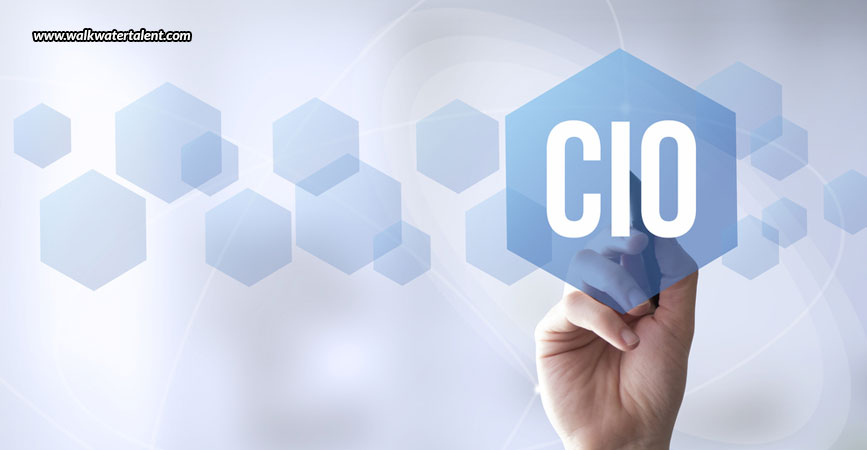
The shift of the CIO (Chief Information Officer) from being a technology expert to also being a business strategist has arguably been more dramatic than any other C-level role transition ever seen. With the onset of the 21st century, another word began to enter the corporate lexicon – digital. So, we began to hear of a Chief Digital Officer (CDO) as well. For the first decade of the millennium there were less than a dozen CDOs worldwide. By 2010, there were around fifty such executives globally. In 2017, a study by PwC found that there was a CDO position in approximately 19% of top global companies, out of whom more than 60% had been hired since 2015. With organizations of every type now aspiring to go digital, the CDO role is well and truly established as an important executive position that is expected to drive the transition to digital.
CIO and CDO – synonym or subset?
The CDO role has more skin in the game as far as business goals are concerned, as opposed to the CIO tackling mostly infrastructure concerns.
More specifically, the CIO role is more concerned with building the information system backbone and creating an information asset. CIOs are tasked with supervising the procurement and optimal usage of new IT tools and technologies. Apart from the hardware side of things, CIOs are also responsible for IT service management internally. The role not only managed IT infrastructure but was expected to align it to the business goals and use technology to drive business as well. At the turn of the 21st century, the CIO needed to be able to integrate technology into business solutions, with more focus on the onset of the web-based era of business. The rapid changes in roles and responsibilities of the CIO seemed to mirror the equally astonishing pace at which older technology kept getting obsolete over these few decades.
On the other hand, the main role of CDO is to organize and drive value from this information/ data asset, by organizing it and driving value from it with decision support and making the company AI ready. The CDO role leads business transformation in the organization, cutting across functions and departments. The Harvey Nash/KPMG CIO Survey in 2018 found that over 40% of organizations who had a CDO had a clear enterprise wide digital strategy. The same survey concluded, though, that “the most successful companies employ both CIOs and Chief Digital Officers (CDOs) who work in tandem to take advantage of innovative technology.”
This indicates that the hyphenated relation between the CIO and CDO roles cannot be wished away. Both these roles try to get the most out of technology and continue to complement each other. The success of digital initiatives is directly proportional to robust implementation, functioning and adoption of IT technologies. The difference between the CIO and the CDO function can be described as CIO being a mostly inward-looking tech function whereas the CDO is an outward looking business function. But both roles are important, one for ensuring continuity and the other for leading change.

Enter the Chief Information and Digital Officer
Instead of having a CIO and a CDO, many organizations are now opting to have a Chief Information and Digital Officer (CIDO). A simplistic way of understanding this role is that it is responsible for ‘keeping the lights on’ as a CIO, and also driving digital transformation as a CDO. As this Forbes article explains, the roles and responsibilities of a CIDO can broadly be encapsulated in three dimensions:
- Growing the core business
- Transforming the core business
- Scaling new businesses
Competencies of a CIDO
There are certain competencies that a CIDO role requires. Based on our experience of finding the ideal CIDO’s for our clients, these are the foremost among them:
- Ability to find the perfect balance between business ambitions and tech abilities
- Mindset to build and empower a team that can act as change management agents
- An appreciation and acknowledgement of the importance of security issues and dovetail cybersecurity measures into all initiatives
- Sense of curiosity to learn and experiment with new things
- Capacity to build and execute on a transformational digital roadmap
Over and above these attitudes and abilities, a CIDO needs to have the tenacity to push through the ideas for transformation across the organization, especially the executive leadership. The ability to influence the senior leadership is not an important competency that a CIDO must possess, it is THE most important capability.
Measures of success
There is no doubt that the CIDO role is an important CXO role today, since every organization aims to ‘go digital’. But this is a role with transformation at its core, hence it is not always easy to have well defined metrics that can be used to measure success. It is no longer simply a cost optimization function. Some measures that are not so easily and directly measurable, but are good indicators of success include “time to market”, customer centricity, productivity, quality improvement and data insights which gives predictive & cognitive analysis.
There are some organizations which look at more direct metrics, like the number of pilots and projects done, or the number of projects which reach scale of operations. Last year, McKinsey defined five key metrics to measure a company’s digital initiatives :
- Return on digital investments
- Percentage of annual technology budget spent on digital initiatives
- Time to market for digital applications
- Percentage of executive incentives linked to digital
- Top technical talent attracted, promoted, and retained

The pecking order
Traditionally, the CIO role was looked at as a cost center, as also a cost saving one. This led to most CIOs reporting into the CFO. The CIDO, on the other hand, also owns the strategic piece for the organization. This is why a more natural reporting structure would be to the CEO. This would mean that the deliverables are better aligned to overall business goals instead of being solely limited to financial metrics.
The Future of the CIDO role
A year back, the then CIO of Marriott International decided to retire. The replacement announced was not a new CIO, but a CIDO. The press release explained that this was done to drive the company’s technology journey to support their future growth. The CIDO of the future will need to carry the mantle of driving business goals as well as technology transformations. We see this as a gradual evolution of the CIDO as the most important CXO function across organizations, and a very strong contender to take over as CEO.
About WalkWater Talent Advisors
We are a 10-year-old boutique executive search and talent advisory firm. WalkWater focusses on leadership hiring across the CEO, CXO and CXO minus 1 level. Today the firm is one of the fastest growing Executive Search firms in India. In the last 10 years, we have worked across sectors with 400+ clients where we have closed 700+ senior management searches and also completed 40+ bespoke talent advisory engagements.
In the recent years, WalkWater has partnered several large and medium sized companies across sectors in their journey of digital transformation and closed several CIO, CDO and CIDO searches. Reach out to us to know more about the talent landscape in this area and also to understand successful case studies completed by us in this critical CXO hire.
By Rahul Shah,
Co-founder & Director,
Walkwater Talent Advisors








